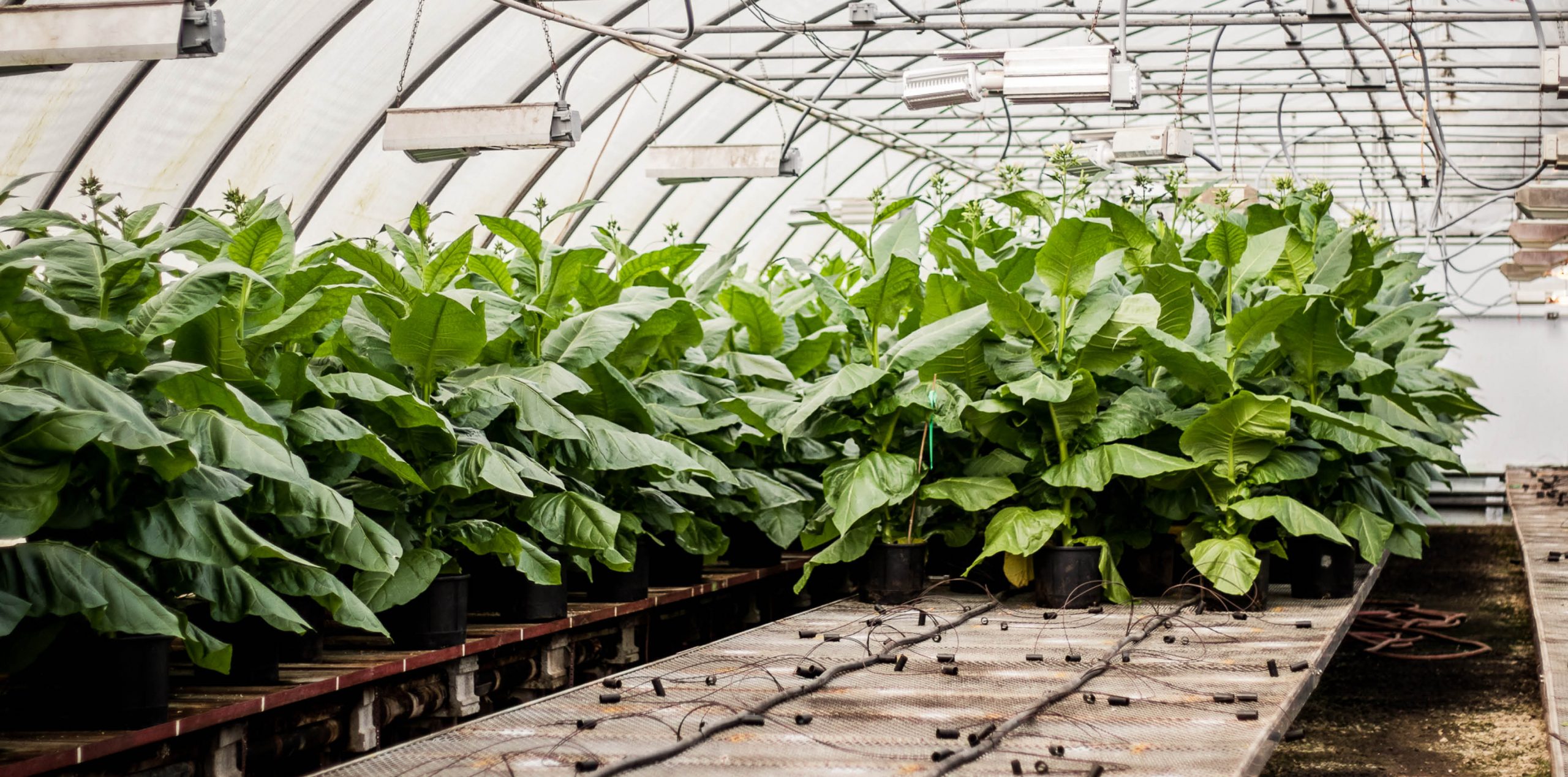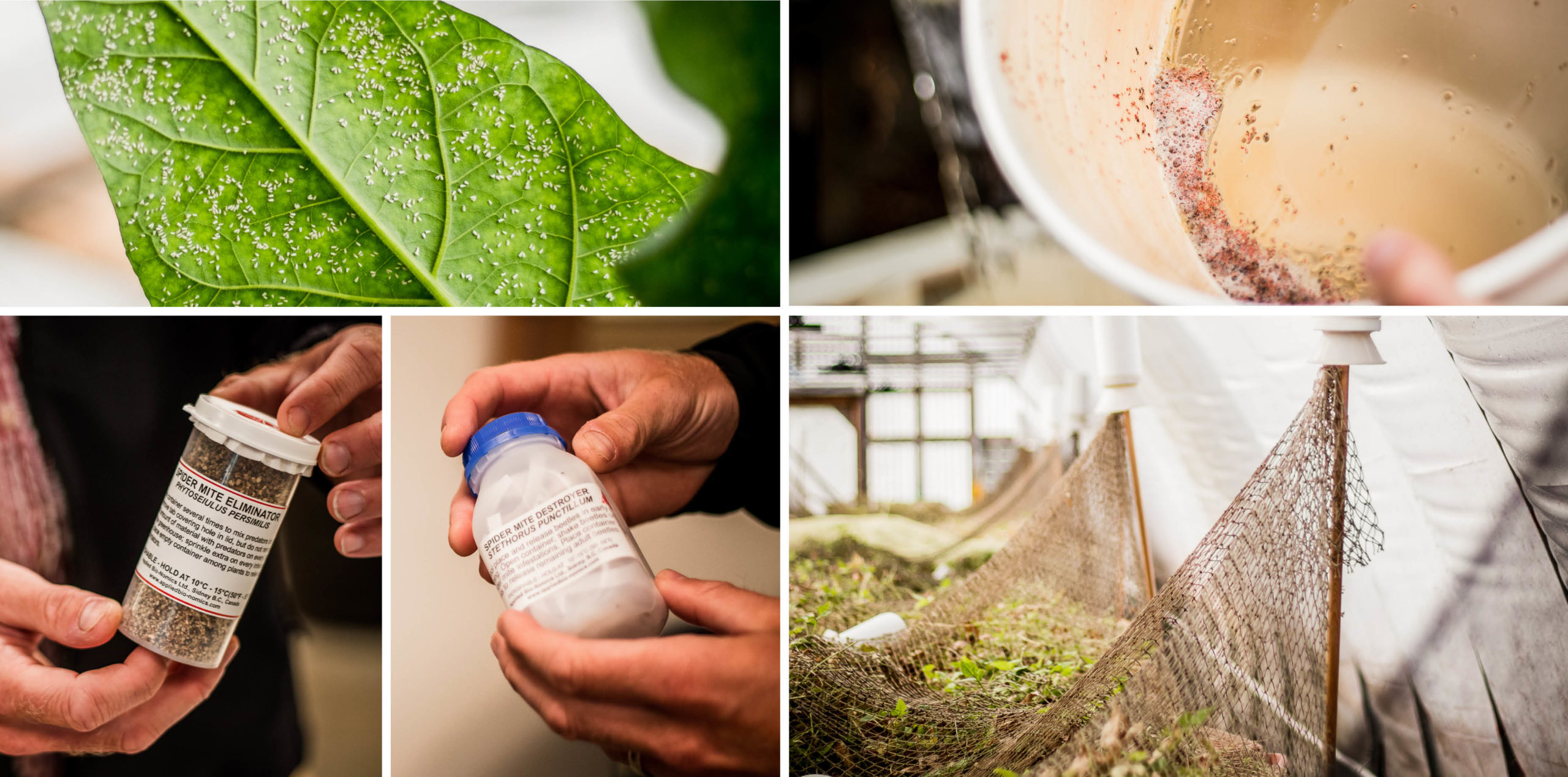Farming is one of the ways we define the Saanich Peninsula. At this time of year production is starting to explode – berries are bountiful, there are salad greens and snap peas, and blooms on the tomato plants promise a flavourful crop later in the summer. At one North Saanich farm there are also healthy crops of white fly and spider mites, encarsia and fallacis; all being grown in careful conditions. Bugs being grown deliberately? Yes! We have an insect farm on the Peninsula and their work is supporting growers around the world, protecting plants and crops from pest damage, and reducing the use of chemical pesticides.
Applied Bio-nomics has been researching and producing biological pest controls since the 1980s. Their facility on West Saanich Road is tucked away: you’ve likely driven past without knowing what goes on inside those greenhouses that give the sky an orange glow during the winter months. I took a tour with David Spencer, getting a chance to see the process from start to finish, and get up close with very (very) many bugs!
It’s a family owned and run business, employing around 30 workers, including two generations of the Spencer family and many local students. Their unusual product is sold to growers within Canada and the U.S. and to a distributor in the Netherlands. Thousands of insects are shipped out in little plastic tubes, or as eggs attached to sticky cards. It’s important to note that all the insects are naturally occurring; there are no engineered or modified super bugs there.
Government funded research assisted the discoveries that have been developed into a strong business model. At its foundation, Applied Bio-nomics takes the stance that using biological control is better than pesticide. Introducing insects that eat the pest you don’t want is a natural process, and prevents the issue of chemical resistance that has blighted many agricultural industries.
HOW DOES IT ALL WORK THOUGH?
Nature of course is one huge network of relationships. Nothing lives in isolation, so at Applied Bio-nomics they tap into sections of the life cycles. To harvest the insect that likes to eat the damaging spider mite, you need to provide that spider mite to them. And to grow sufficient spider mites, you need a plant that they love. It’s a tritrophic process that starts with rows and rows of bean plants. For white fly, tobacco plants are chosen.
The pest is introduced to the plant, where it breeds and flourishes in the perfectly maintained greenhouse conditions. Then the predator is introduced. That predator is in heaven in its infested world and eats up the pest or parasitizes its eggs. At this point the beneficial bug is harvested and the host plants composted.
Being taken through each greenhouse and seeing the process at every step, what struck me was how simple all the mechanisms are. If you had asked me how you could harvest a tiny insect that flies freely I would have struggled to come up with a suggestion. What I saw at Applied Bionomics is a harnessing of insect behaviour. For instance, research and observation shows that certain insects will migrate to the highest point of a plant: by covering the plants with netting, and then stationing traps at the high point of the nets, the bugs harvest themselves. For an insect that drops their larvae to the ground, arranging the plants in a structure that allows a water system to wash those dropped larvae into a sieve is an effective “hands-free” harvest.
Water, sieves, fans: it’s low-tech equipment maybe, but the process is highly controlled through climate, watering, timing and years of scientific research. Recent innovations at the farm include replacing the old boilers with high efficiency natural gas boilers and adding banks of solar panels, but the basic bug-eats-bug system stays the same.





